Disease is excess oxidation
Diseases are an excess of oxidation – Redox physiology is an excess of oxidation greater than reduction.


Fascia is a system of flexible connective tissue surrounding everything in the body. If the system is supple and running smoothly, all is fine, but when some parts become stiff, tense or inflamed, there will be consequences.
Many problems can be linked to the Fascia since it is such a critical part of our metabolism, stabilizing function, musculoskeletal system, has a force-transferring effect as well as helps us know our position.
The Fascia’s status affects our general health and the well-being of the body. A fault may give troublesome pain conditions that are difficult to get out of.
On this page we have gathered lots of information about different problems and health conditions and how they are connected to the Fascia.

Diseases are an excess of oxidation – Redox physiology is an excess of oxidation greater than reduction.
Inflammation is a very important function for the process of healing infections. Heat and pain occur and the immune system works actively to process bacteria or to heal an injury.
What we do know for sure is that the abundance of sugar has a negative effect on the fascia and makes it less elastic. Stress also affects the fascia in a disadvantageous way
Vitamin C has many different actions in the body. It is a coenzyme, which assist in various physiological processes in the body and it is a powerful antioxidant.
Dr Heike Jäger, Professor Karl Arfors and innovator Hans Bohlin presented the latest research regarding Fascia, inflammation and Fascia treatment in Stockholm, May 2017.
Fascia that has thickened hardened and has impaired gliding ability causes a lot of symptoms.
When the food we eat is metabolized, metabolites are formed. The metabolites can be acidic or alkaline, depending on what we eat.
New research leads to insights and by looking at the body in a completely new way we get new perspectives and explanations to symptoms and diseases. At the 2015 Joint Conference on Acupuncture, Oncology and Fascia in Boston, research was presented regarding Fascia and Cancer
Explaining various forms of back pain such as Low back pain / Lumbar pain / Lumbago / Crick
Lumbago follows the same pattern as hyper-extension. We usually have built up tension and stiffness that eventually impair the reaction of the nerves and muscles of the rigid area.
In places where the body has become stiff and numb the nervous system cannot signal the situation as quickly as it should so that we can control our movements.
Thanks to the linked connective tissues, we can absorb a shock throughout the body. A blow to the foot from a stone can thus provide an impact at the end of that connective chain, right up to the base of the skull.
Oxidative stress – Is your body also rusting? Join the Fascia Conversation Today! Listen to the world’s number one Fascia podcast here Get the FREE Fascia Guide Method here Watch the celebrated Fascia documentary here As the cells in the body metabolize the food we eat and convert it into energy (ATP) in the mitochondria,…
David Lesondak is a structural integrator and a myofascial specialist who has been working for many years trying to explain what fascia is, as well as the benefits you get from treating different problems with fascia treatment. In an interview at the Fascia Research Congress in Berlin 2018, he describes the basics of what fascia is and what challenges it is facing in the strive for recognition in the medical field.
A lot of injuries after a long break might not be that unusual – but why do so many female athletes suffer from cruciate ligament injuries?
As the body builds scar tissue after damage to the skin, scar tissue build up in the Fascia inside the body when it is damaged. Therefore, we can get a chronic reduction in movement inside after an operation in which the Fascia is sewn together.
Most of the questions we receive are about various issues and discomforts related to Fascia. How can Fascia represent a new way to treat and prevent problems?
New research shows that low back pain is caused by inflammation in the Fascia. But why are we getting low back pain and what happens in our body when we get back pain?
Fascia is a system of flexible connective tissue encapsulating everything in the body. If the system is running smoothly, all is fine, but when some parts become stiff, tense or inflamed, there will be consequences.
Fascia has different firmness depending on how well the collagen is deposited into the tissue.
More women than men suffer from back pain, sprains, ACL injuries, and similar conditions. How come?
Hypermobile people build up enormous tension in their muscles that give painful tension in the joint, and they often get nerves pinched.
The function of the articular cartilage is to reduce friction between the two articular cartilage surfaces and facilitate sliding when the joint moves, and to absorb the load when the joint is exposed to pressure, compression